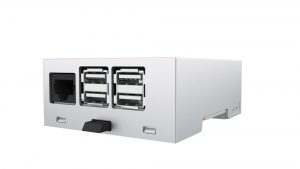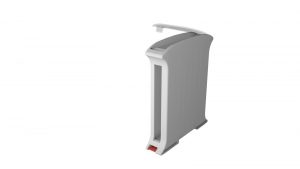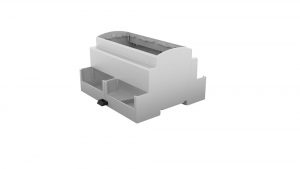
Detailing the selection process of a DIN rail plastic enclosure
By John Meikle, director of electronics, TCH Sales Inc., Toronto, exclusive franchised distributor of Italtronics enclosures in North America
Electronics DIN rail DIN rail enclosure enclosures plastic plastic sourcing sourcingPicking the right enclosure for any application can be a little challenging when it’s your first time

The printed circuit board has to be designed with the enclosure in mind.
DIN rail plastic enclosures are used to house multiple types of populated printed circuit boards (pcb) that serve various types of applications. One of the most popular are the single board computers (ex. Raspberry Pi, Arduino and Beaglebone.
These enclosures are based on DIN (Deutsches Institut für Normung) specification and were introduced primarily by European manufacturers. Today, these embedded enclosures are available from several different manufacturers around the globe now. They come in an array of sizes, orientations, colors and styles. It’s really the next evolution from the more mature pcb supports or carriers.
Typical vertical sizes (how the pcb sits in enclosure) begin at 7.5mm – and move right up to 45mm, while the horizontal sizes start with 1M (18mm width) right up to the 12M (213mm). All offer different features and accessories. Some of these features have pre-loaded terminal blocks, led holes, vents, removable covers and sides, clear plastic face plates and different profiles for multiple board applications.
Picking the right DIN Rail enclosure for any application can be a little challenging when it’s the first time working with these enclosures. To help in the process, most manufacturers have good information available on their websites. Some even have a configurator where it walks you through the design or selection steps. The pcb has to be designed with the enclosure in mind and it’s important to look at this up-front, as it’s a critical stage during the design process. In most cases you need to leave a clean edge or leading edge on the board so it can be snapped into place or sandwiched into place as you assemble the enclosure.

Always be sure to check the plastic specification and approval ratings.
In the selection process, it would be wise to use the manufacturer’s sights to help with this as mentioned above. Here’s what you will find on some websites and it tends to be only with the horizontal, multi-board enclosures. The sites will walk you through the selection stage, where it offers various profiles and sizes. In most cases it will ask you to select the type of face plate or top cover; solid, clear, rounded, flip up and so on. It will then take you to the accessories that they offer like screwcaps, jumpers, and connectors. Some will even offer a step where you can select value added features like CNC work, or some form of printing. Many of these features are also offered from select manufacturers on the vertical type enclosures. Some makers provide a BOM and estimated quote once you’ve finished the selection process – including all the accessories and value-adds.
Key points when choosing your enclosure!
Be sure to check the plastic specification and approval rating. This is sometimes not readily available on some sights, but it’s an important step. You will find that some manufacturers use plastic that is rated at 65C and others use a higher grade plastic that comes with an improved rating of 90C. Wall thickness comes into play when using different plastics.
One last point: not all DIN rail enclosures are made by the vendor you selected. If you are looking to include any modifications, or added value, it may be wise to choose an original manufacturer (OEM supplier). You will have a much wider selection of vendors to choose from if you only want an empty shell and no features.

Most enclosure suppliers have info available on their websites to help the design process.
Why use these type of products? Here’s some key points:
– Low cost entry to market, low capital startup;
– Easily scalable to higher volumes, starting with short run CNC production to semi-custom molded solution;
– Interchangeable common covers for product variations;
– Launching point for the design cycle with pre-design pcb form factor;
– CNC production can be used for certification and testing because it is the actual product (not a rapid prototype);
– Standard mounting to DIN rail.
In the end, you should be happy with the product you’ve selected for your application – and now you are ready to go.
